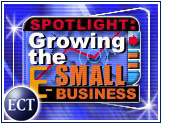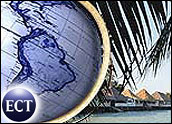A report released Thursday by Jupiter Research predicts that by 2005, more than 40 million U.S. households will pay at least part of their bills using online bill paying services.
The report also advises banks to “forgo selfish interests” and form alliances with online electronic bill payment and presentment services (EBPP).
“Banks are logical EBPP-enablers because of their trusted relationships with both consumers and businesses,” said James Van Dyke, an analyst with the New York City-based research firm.
Van Dyke added, “However, these financial institutions must stop watching this market and start driving it. Fast-moving technology companies that want to control the billing and payment process are poised to take over the online financial aspects of that customer relationship.”
Maturing Industry
The online bill payment market is more complex than e-tailing, Van Dyke told the E-Commerce Times, because third-party bill paying services must contract with individual billers, gather the billing information, and then present it online in a secure fashion.
The industry has also been plagued by a lack of consistency. Billers and consumers alike are finding that services that work through one biller’s Web site will not work through another’s. This lack of consistency has kept both billers and consumers on the sidelines waiting for the industry to mature, according to Van Dyke.
Signs indicate that the online bill payment service market may be gaining acceptance among increasingly savvy Web surfers as trusted names such as Wells Fargo and the United States Post Office jump into the fray.
Van Dyke also predicted that the market will grow as more money is spent on promoting online bill payment services.
Money To Be Saved
Significant savings can be realized by companies who turn to EBPP services. Van Dyke said that, at an average cost of $1.50 (US$) per bill, U.S. companies spend $18 billion each year sending out bills to consumers.
Van Dyke predicted that companies that can entice their customers to pay their bills online “may pass some of the cost savings on to consumers.”
A report released earlier this year by IDC predicted that by 2004, EBPP services will generate over $1 billion in revenue worldwide. Last year, revenues generated by the industry were just $32 million, according to the report.
Rapid Growth
Jupiter says that because of its current low level of adoption, EBPP will grow more rapidly than either online banking or shopping over the next five years.
The research firm predicts that EBPP adoption will take off quickly in 2001 and double in volume in the following two years. In 2003, the ability to view and pay bills online will become more popular than making online payments of bills that arrive via more traditional delivery modes.
According to Jupiter, by 2005, online bill paying will have grown from the 100,000 households that currently pay their bills online to 40.2 billion households.
EBPP Stickiest
Analysts say that the financial supermarket of the future will be a Web storefront offering a wide variety of products and services, including insurance, mortgages, credit cards, traditional bank accounts, brokerage services, and EBPP.
Jupiter says that EBPP is the stickiest, and most valuable, piece of the puzzle because it is the one application that will keep customers coming back. It will also give consumers a good reason to establish an online bank account from which their electronic payments can be deducted.
Jupiter says that technology-based services such as EBPP will determine the destiny of many banks, and that slow-moving community banks and credit unions that fail to embrace the new technology will “all but vanish as consumers turn to other banks that can keep up with the needs of Internet-ready consumers.”












































Social Media
See all Social Media